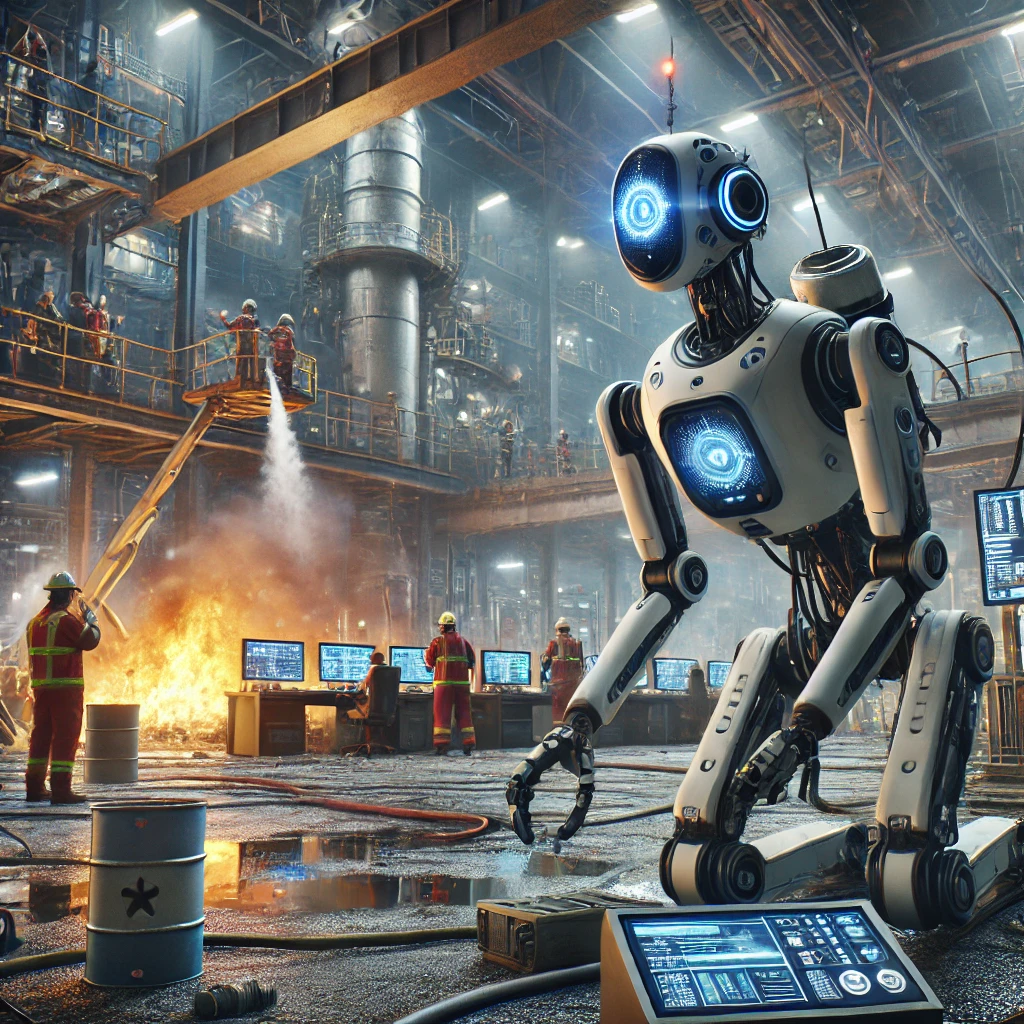Some jobs put people in harm’s way. Think about going deep into mines working with dangerous chemicals, or helping when disasters strike. These tasks can hurt people. Good news is, robots now tackle some of these risky jobs. This keeps workers out of danger and gets things done faster.
Let’s explore how robots are shaking things up in dangerous work.
1. How Robots Protect Workers
Robots can do jobs that might kill people. Take mining, for instance. Robots search tunnels underground, find gas leaks, and even blow things up . No human needs to risk their life.
Nuclear power plants use robotic arms and drones to check and fix equipment. This keeps workers safe from dangerous radiation. It also makes maintenance faster.
2. Robots in Emergency Situations
Natural disasters like earthquakes or floods create unsafe conditions for rescue teams. Search-and-rescue robots help in these situations. These machines can move through fallen buildings or flooded areas to find survivors and check damage.
Rescue robots come in two types: some need remote control, while others have AI to work on their own. By handling these risky jobs, robots help save lives and keep human rescuers safe.
3. Robots in the Oil and Gas Industry
Working in oil and gas means handling highly flammable stuff and extreme conditions. Robots now inspect underwater pipelines, weld pipes, and look for leaks—jobs that would put humans at risk.
operated underwater vehicles (ROVs) prove useful in deep-sea drilling. They can dive deeper than humans and operate under intense pressure making offshore operations safer and more productive.
4. Robots in Chemical and Nuclear Plants
Dealing with hazardous substances happens in chemical and nuclear plants. Robots now move dangerous materials, keep an eye on safety conditions, and do maintenance work.
For instance, in nuclear plants robotic arms do jobs that would put humans at risk of dangerous radiation. This tech has already stopped many accidents from happening and made work safer for employees.
5. Why Robots Are the Best Choice for Dangerous Jobs
The main benefit of using robots? Keeping people away from deadly situations. But there’s more to it:
- They keep going – Robots work without stopping for breaks, which makes them super productive.
- They’re spot-on – In tasks like welding, cutting, or putting parts together, robots do the job with pinpoint accuracy cutting down the chance of mishaps.
- They go to tough spots – Robots can check out deep underground places, plunge into the sea, and enter risky areas where people couldn’t survive.
6. The Hurdles of Using Robots in Risky Places
Even with their plus points, it’s not a cakewalk to use robots in harsh conditions.
- They cost a lot – Building robots that can handle extreme heat, pressure, or poisonous settings has a hefty price tag.
- They need upkeep – When a robot stops working during a job fixing it can be tricky and take a long time.
- They still rely on people – Though AI-driven robots are getting better, they still need humans to watch over them to make sure they work right.
7. What’s Next for Robots in Dangerous Jobs
As tech gets better, robots will be able to do even more. With AI and machine learning, they’ll make choices on the spot, adjust to surprises, and tackle tougher jobs.
Drones with cutting-edge sensors are causing a revolution in rescue missions, while robots in fields like mining and nuclear power keep getting better. The aim? To build a world where machines do the risky jobs—so people don’t need to face danger.
